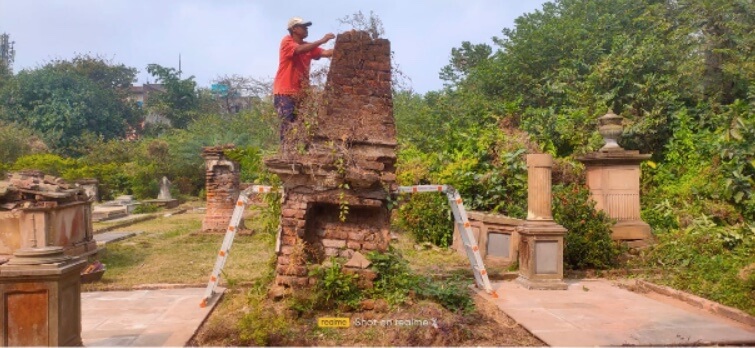KSHT – The Kolkata Scottish Heritage Trust is raising awareness of Kolkata’s Scottish built heritage. In cooperation with INTACH (Indian National Trust for Art and Cultural Heritage), the trust is drawing attention to buildings and sites in the city with historic connections to Scotland and the Scots.
The city’s Scottish Cemetery is listed as a Grade 1 heritage site by the Kolkata Municipal Corporation. It is connected, by virtue of the people buried there, to Kolkata’s Indo-Scot heritage. By making a list of sites with such background, the trust aims to highlight the connections between the personalities and the city’s built heritage. The sites associated with people buried in the Scottish Cemetery will be identified by a plaque.
The trust has compiled a list of potential listed locations. Amongst its recommendations are:
- The Botanic Garden. Proposed in 1787 by Colonel Robert Kyd, born in Forfarshire, Scotland.
- Howrah Station. Designed by George Turnbull of Luncarty, Scotland and acclaimed as ‘first railway engineer of India’.
- Finlay Muir & Co building James Finlay & Co was formed in 1750 and became one of Scotland’s leading cotton manufacturers and merchants, later came under the control of John Muir and diversified into Indian tea plantations.
- Hooghly Jute Mills The city’s first jute mill was established in Rishra in 1855 when George Acland and Bengali financier Babu Bysumber Sen brought jute spinning machinery from Dundee.
- The Tollygunge Club. Set up by Sir William Cruickshank in 1895.
- The legendary Fairlawn Hotel.
Kolkata’s other Grade 1-listed European graveyards are the South Park Street, Lower Circular Road and Bhowanipore War cemeteries.
December 2022

Further reading
- KMC list of heritage sites https://www.kmcgov.in/KMCPortal/jsp/HeritageList.jsp
- Draft list of heritage sites https://goo.gl/maps/Ad6AKRh3BpS6NZqY9
- The Scottish Cemetery in Kolkata http://readinggamesplayingbooks.com/scots/node/195
